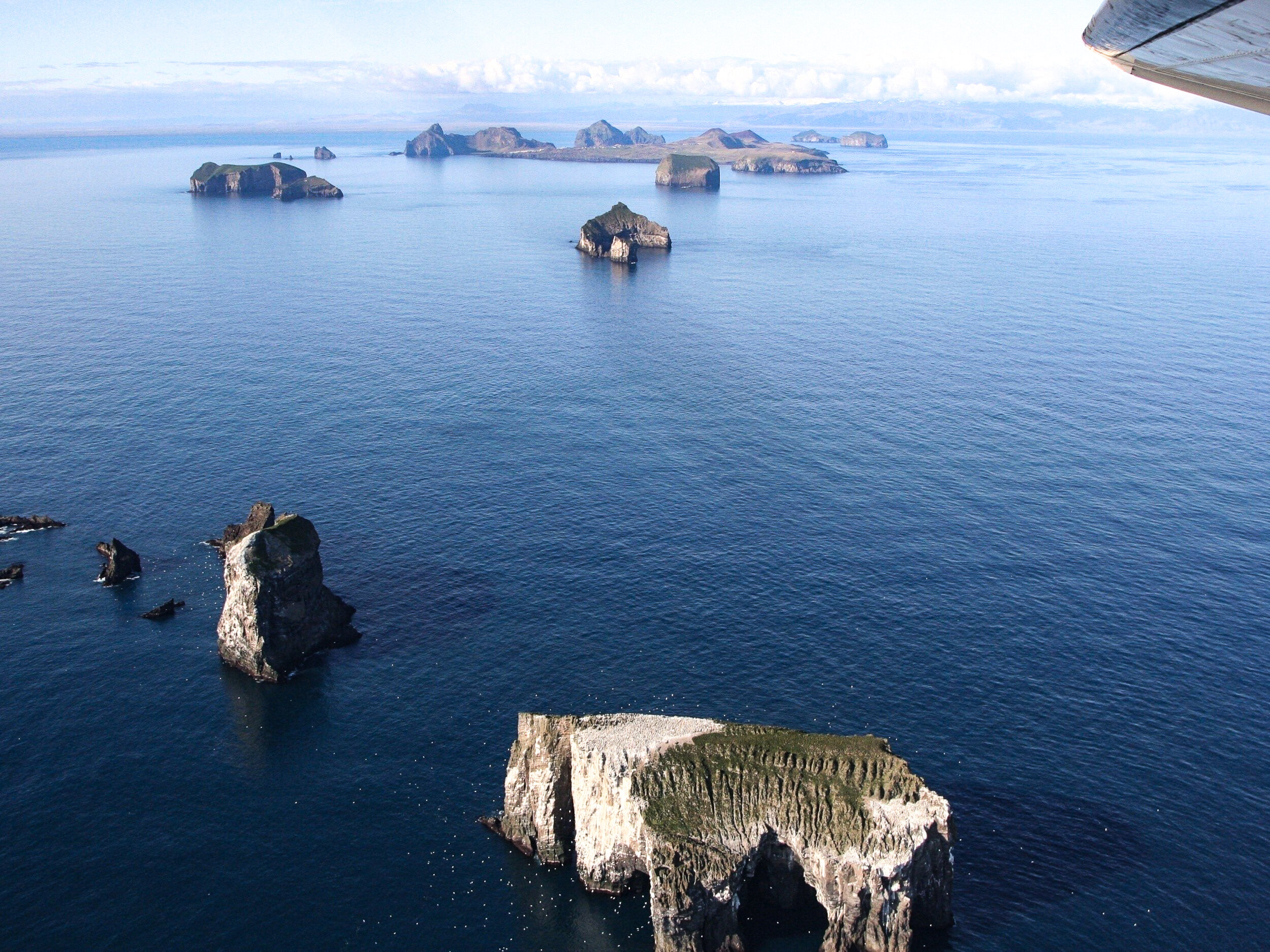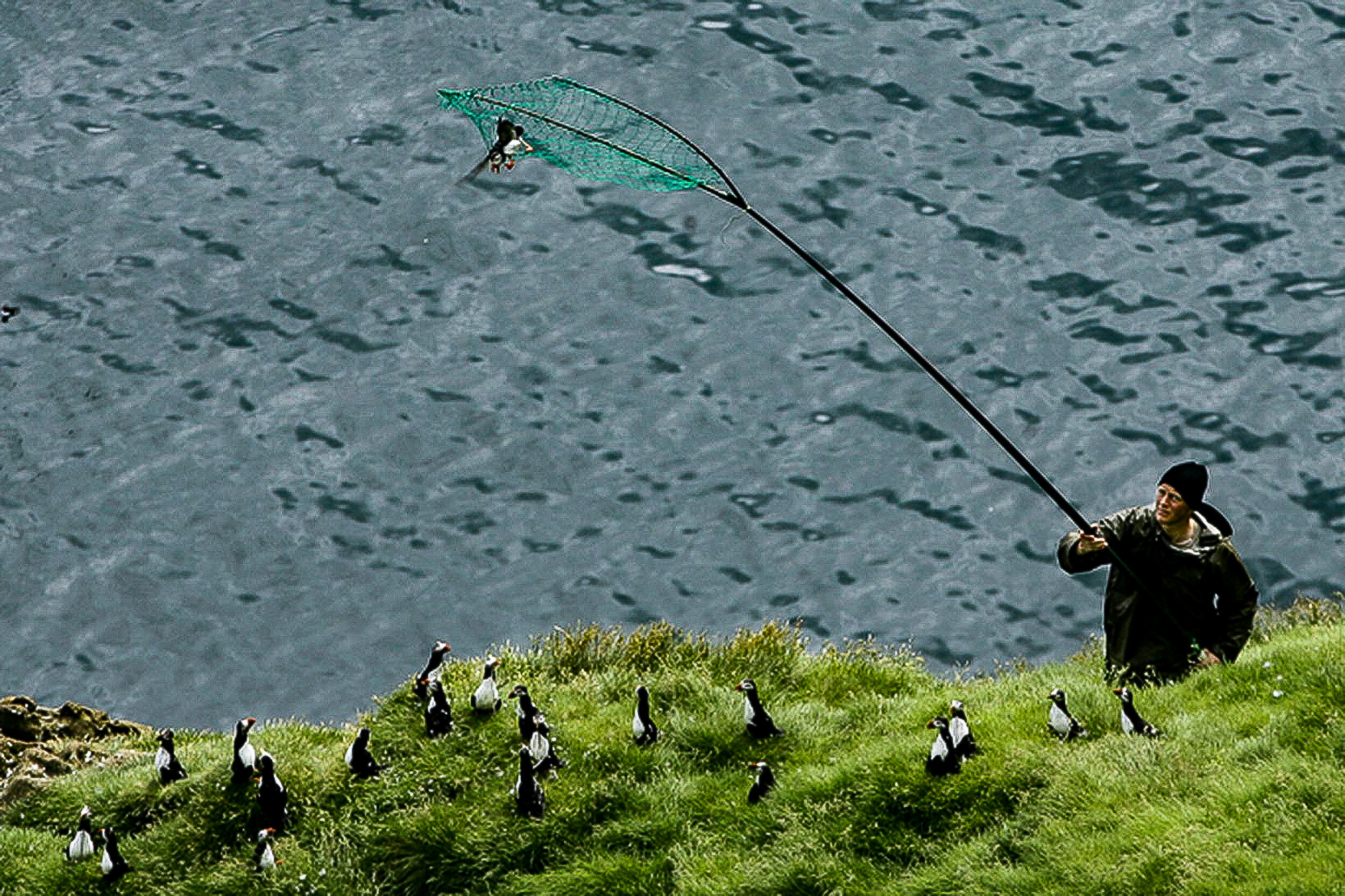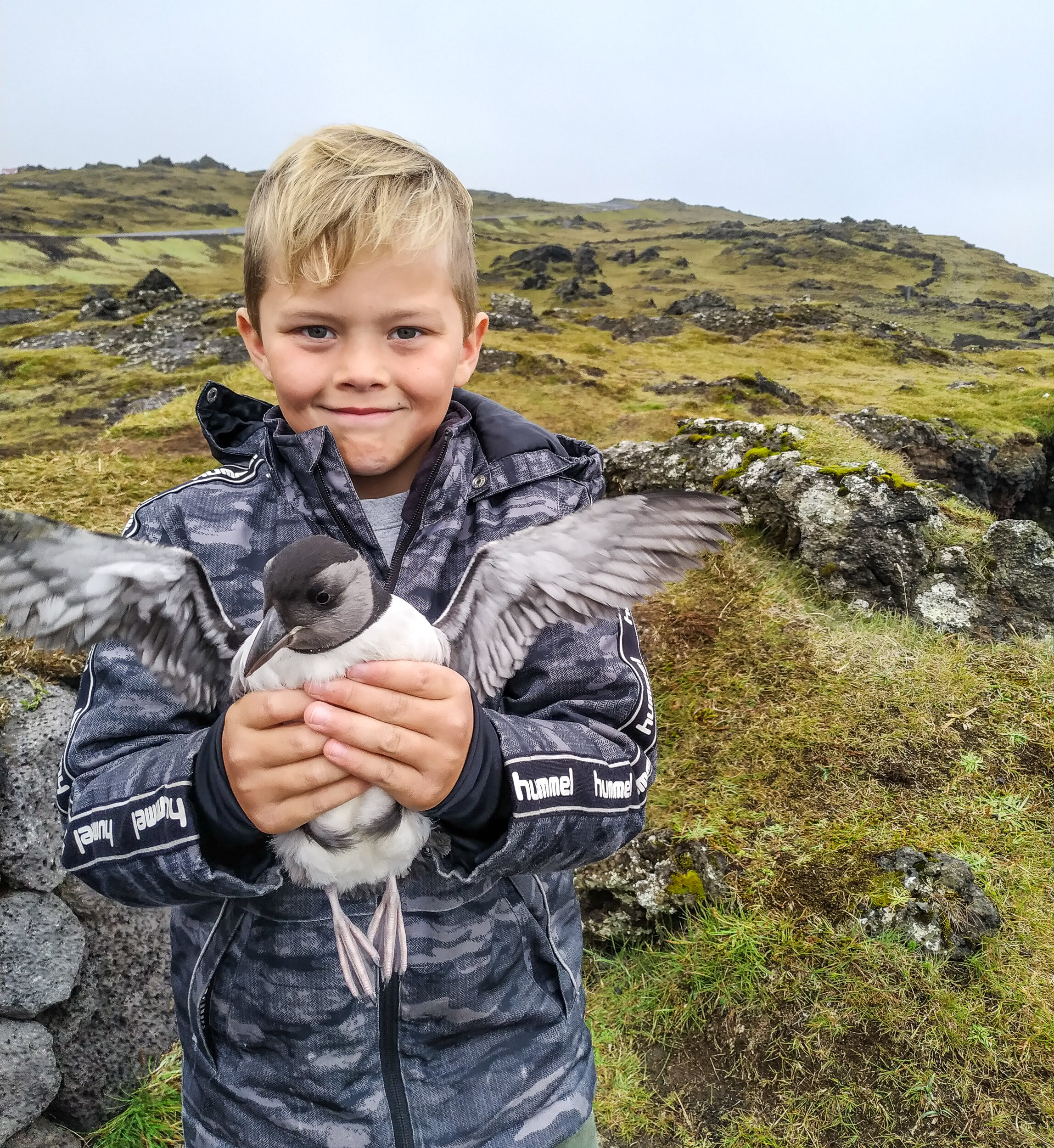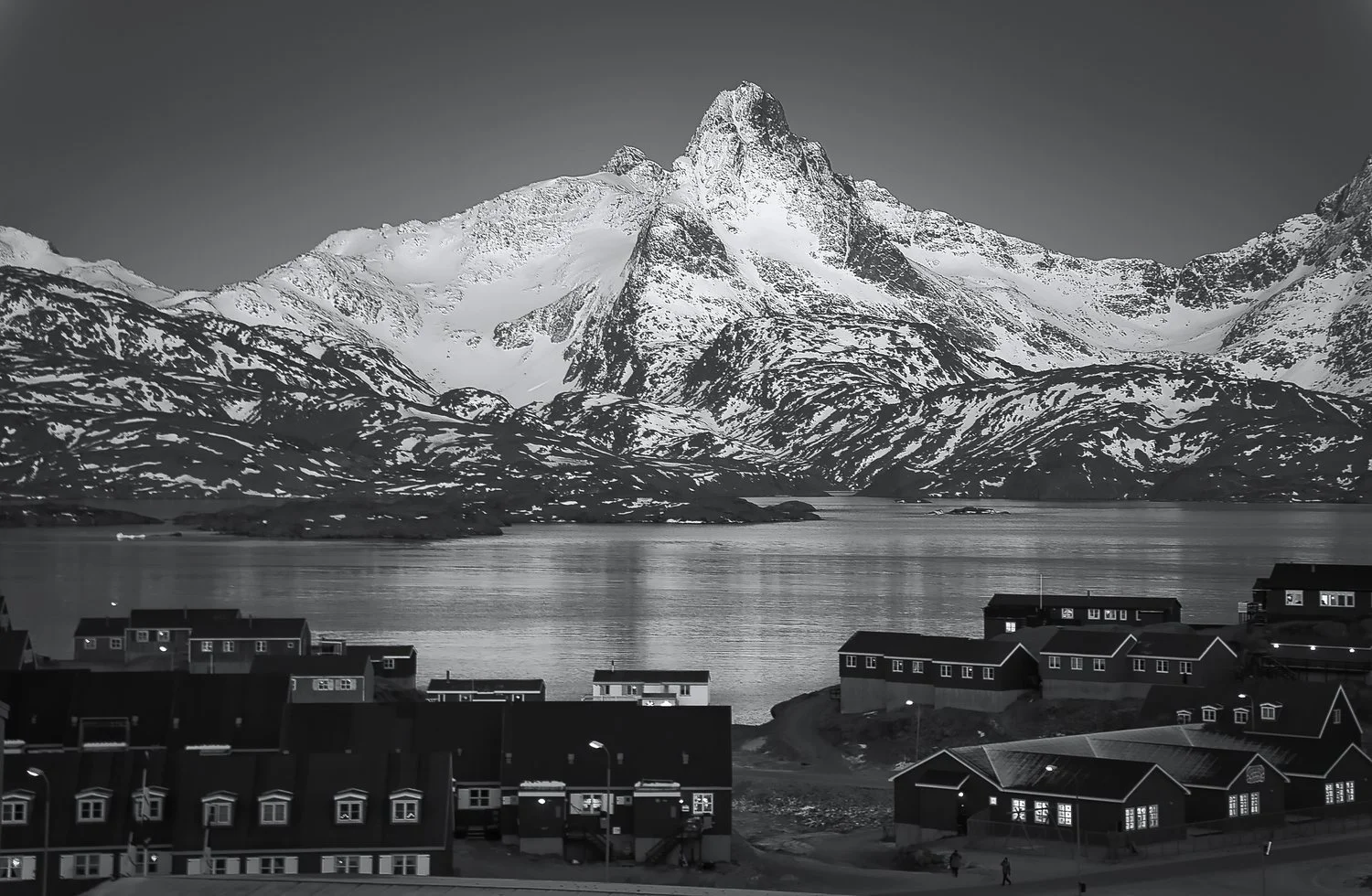Puffin Hunting In Iceland Gives A Unique Insight Into Climate Effects
SCIENCE / COMMUNITY
Writers: Helge M. Markusson // The Fram Center, Vilborg Einarsdottir
Photographs: Ragnar Axelsson, Tyche Anker Nilssen, Johann Oli Hilmarsson, Tinna Osk Thorsdottir
June 2021
Global warming has already resulted in measurable climate change and will lead to even greater changes during the forthcoming decades.
"In order to understand how different species will fare under these conditions, we usually have to investigate how they have previously responded to climate variations. However, it is not easy to measure responses to climate variations!” These are the words of Hanno Sandvik, a researcher at NINA – the Norwegian Institute for Nature Research.
The classic definition of climate is "the average weather over a 30-year period"; and in order to establish how a species responds to changes in the climate, strictly speaking, it would be necessary to have included data from several 30-year periods. Such datasets only exist for a very few species.
Helge M. Markusson explains how 130 years of catch data show that global warming is contributing to population decline in the world's largest puffin colony.
Long series
However, a group of researchers from Iceland, Norway, Germany, and England have managed to present a 128-year dataset on puffin offspring production on the Westman Islands (Vestmannaeyjar) off Iceland.
This is based on the fact that the archipelago’s inhabitants have been hunting puffins since the Middle Ages, for both their meat and their feathers. They hunted the birds from hiding places on the steep cliffs, using long-handled nets and simply hauling them in as they flew by.
The Westman island, Vestmannaeyjar, off Iceland’s south coast, home to the largest puffin colony in the world. JONAA©Johann Oli Hilmarsson
“Harvest statistics have been kept since 1880, and these show that harvest could amount to as many as 150,000 birds during the course of a season. The puffins they caught were mainly pufflings that had not started nesting. We have therefore used a statistical model for converting these catch statistics into cohort sizes for pufflings fledged 2-6 years earlier. Puffin hunting ceased in 2010, so we ended up with harvest data for the period extending from 1878 to 2005,” says Erpur S. Hansen, a researcher at the South Iceland Nature Research Centre (Náttúrustofa Suðurlands).
“So our data also shows the effects of the so-called early 20th century Arctic warming period, which began around 1920. There are hardly any datasets for seabirds that go so far back in time," says Kjell Einar Erikstad at NINA.
Photograph taken before 2010 when puffin hunting was no longer permitted in the Westman Islands due to the declining puffin population. JONAA©Ragnar Axelsson
New insights
"This data has given us some insights that would have been difficult or impossible to demonstrate with less extensive datasets. The usual method used for quantifying climate effects involves estimating the increase or decrease in offspring production when the temperature increases by 1°C (correlation). However, in this case it turned out that the sign of the correlation changed three times during the 20th century. During the 50-year period after 1920, and again from about 1990, the correlation was negative: offspring production dropped as the sea temperature increased. During the remainder of the period, the correlation was the reverse,” says Hanno Sandvik.
The explanation for this lies in the fact that offspring production is highest when the sea surface temperature is 7.1°C. If the temperature increases or decreases by 1°C, offspring production drops by 55%. The sign of the correlation is therefore determined by whether or not the sea temperature fluctuates above or below the optimum temperature. This pattern is not actually that hard to explain, but it would have been difficult to spot with less data.
Figure 1: During periods extending between 20 and 50 years, offspring production has varied either synchronously (+) or anti-synchronously (−) with the sea temperature. This sign changed three times during the 20th century.
Figure 2: The optimum temperature for puffins in Iceland has been shown to be 7.1°C. Both lower and higher sea temperatures resulted in a decline in offspring production.
Slight hopes of puffins adapting
These temperature correlations are probably based on the fact that puffins in the Westman Islands feed mainly on the lesser sand eel. The optimum temperature of this species of fish is around 7°C, i.e. its reproduction and survival is lower at other temperatures.
"Since we can expect further increases in sea temperatures, it can be assumed that puffin populations will continue to decline. This decline in breeding success is also the reason why hunting was banned in 2010. Even though the Westman Islands had 830,000 breeding pairs at that time, and thus were the world's largest puffin colony, they are facing an uncertain future," explains Erpur Hansen.
"There are some slight hopes that puffins will be able to adapt to the changing situation to some extent. The temperature at which puffins produce the most fledglings has actually increased by a quarter of a degree over the last century. This may be due to the fact that puffins are increasingly finding alternative food to lesser sand eels, or maybe the sand eels are undergoing evolutionary adaptation to this increase in temperature. However, according to Hansen and Sandvik, the problem is that the average sea temperature around the Westman Islands has increased more than three times as fast (by 0.8°C).
JONAA©Tyche Anker Nilssen
JONAA©Tinna Osk Thorsdottir
A beautiful local tradition of rescuing Puffin chicks lost on their way to the ocean
Like everyone in the Westman Islands off Iceland’s south coast, Tinna Osk Thorsdottir and her husband Valur Smári Heimisson grew up in the tradition of every generation; going around town as kids and teenagers searching for and rescuing puffin chics that had lost their way trying to reach the ocean. Now their sons, Hákon Þór and Hinrik Freyr 9 and 4 years old, follow in their footsteps.
“It is a period of two, three weeks in late August when puffin fledglings are found around town and need to be rescued,” says Tinna Osk. “What we do is to search for them especially on nights when the streets are wet and reflect surrounding lights. The fledglings mistake lights and reflections for the ocean and land, but then they cannot get up again on their own.”
Tinna says that they usually take the fledglings home and care for overnight, bringing them the next morning to the Sea Life Museum where they are weighed and checked, before being taken to the seaside and “thrown” towards the sea so they can take flight again and reach their original destination - the North Atlantic Ocean.
JONAA©Jóhann Óli Hilmarsson
Hákon Thor Smárason has rescued many puffin fledglings in his 9 years of age and helped to finish their first journey to the ocean in the Westman Islands tradition. JONAA©Tinna Ósk Thorsdottir
References and further reading:
Funding:
The research is being funded by the Fram Centre, under its research program entitled "Effects of climate change on fjord and coastal ecosystems in the north", and the Research Council of Norway.
Reference:
Global Change Biology:
Hansen et.al: Centennial relations between ocean temperature and Atlantic puffin production reveal shifting decennial trends.
Helge M. Markusson works as Outreach Coordinator at The Fram Centre (FRAM High North Research Centre for Climate and the Environment). Author and columnist. Former journalist of newspapers, radio and TV. Has also been involved in a series of smaller and bigger culture projects. Raised in Northern Norway, living in Tromsø, Norway. Helge is a member of the JONAA founding team.
Vilborg Einarsdottir is the Editor-in-Chief of JONAA, the Journal of the North Atlantic & Arctic and a JONAA partner & founder. Formally a journalist for 12 years at Morgunblaðið in Iceland, she has worked since 1996 as a specialised producer of film, photography and media productions on extreme locations in Arctic Greenland and as a cultural producer in the Nordic-Arctic region. She is an awarded film and documentary scriptwriter and editor of photography books from the Arctic.































